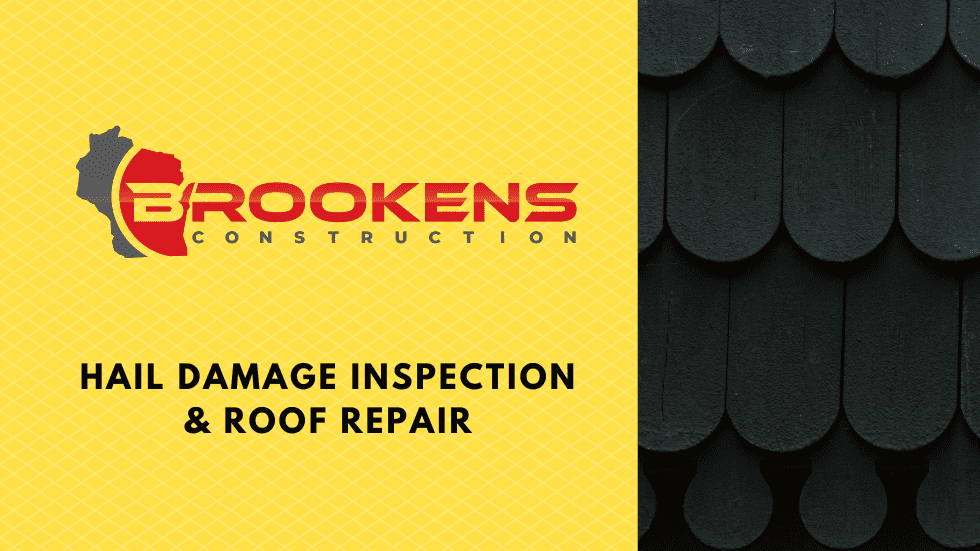Hailstorms can be a homeowner’s nightmare, wreaking havoc on roofs and causing significant damage. As the frequency and intensity of hailstorms seem to be on the rise, it’s crucial for homeowners to take proactive measures to protect their roofs. In this blog post, we’ll discuss prevention strategies, post-storm inspection guidelines, and effective repair methods to guard your roof against hail damage.
Prevention: Shielding Your Roof from Hail
Invest in Impact-Resistant Roofing Materials:
- One of the most effective ways to prevent hail damage is to invest in impact-resistant roofing materials. Consider materials like impact-resistant shingles, metal roofing, or synthetic materials that can withstand hailstones better than traditional options.
Install Protective Roofing Accessories:
- Enhance your roof’s defense by installing protective accessories. Hail guards, which are screens or grates placed over vulnerable areas like skylights, can significantly reduce the impact of hailstones. Additionally, gutter guards can prevent clogs and ensure proper water drainage during hailstorms.
Regular Tree Maintenance:
- Trim overhanging branches and limbs near your roof regularly. During a hailstorm, these branches can become projectiles, causing extensive damage to your roof. By keeping trees well-maintained, you minimize the risk of hail-related roof damage.
Consider Impact-Resistant Skylights:
- If your home features skylights, consider upgrading to impact-resistant options. Hail can easily crack or shatter traditional skylights, leading to water infiltration and additional damage. Impact-resistant skylights provide an extra layer of defense against hailstones.
Post-Storm Inspection: Assessing Hail Damage to Your Roof
After a hailstorm has passed, it’s crucial to conduct a thorough inspection of your roof to identify any damage that may have occurred.
Examine Shingles and Roofing Materials:
- Start by visually inspecting the shingles and roofing materials. Look for signs of dents, cracks, or granule loss. Hail damage may not always be obvious, so inspect your roof from multiple angles and distances to ensure a comprehensive assessment.
Check Gutters and Downspouts:
- Inspect your gutters and downspouts for accumulated granules, dents, or damage. These can serve as indicators of hail impact. Additionally, check for any blockages that may impede proper water drainage.
Inspect Flashing and Ventilation Systems:
- Pay attention to flashing around chimneys, vents, and other roof protrusions. Hail can compromise the integrity of flashing, leading to water leaks. Ensure that ventilation systems are intact, as hail damage may affect their functionality.
Look for Interior Signs of Damage:
- Inside your home, check for water stains on ceilings and walls. Hail damage may result in roof leaks, and identifying interior signs promptly can help prevent further water damage and mold growth.
Roof Repair Guide: Addressing Hail Damage Effectively
If your roof has sustained hail damage, prompt repairs are essential to prevent further deterioration. Give us a call! We can give you a free professional roof inspection and estimate.
Replace Damaged Shingles:
- For roofs with asphalt shingles, replace any damaged or compromised shingles. This includes those with cracks, dents, or missing granules. Timely shingle replacement is crucial to maintaining the structural integrity of your roof.
Address Roof Leaks:
- If you discover leaks, address them promptly to prevent water damage to your home’s interior. Seal any openings or gaps with appropriate roofing sealant, and consider hiring a professional roofer to assess and repair more extensive damage.
Consult with a Professional Roofer:
- Additionally, hail damage may not always be evident to the untrained eye. Consulting with a professional roofer can provide a more thorough assessment of your roof’s condition. We can identify hidden damage and recommend necessary repairs or replacements.
Insurance Claim Considerations:
- Also, if your home is insured, contact your insurance provider promptly to report hail damage. Provide documentation, including photographs of the damage, to support your claim. Many insurance policies cover hail damage, helping offset repair costs.
Guarding your roof against hail damage involves a combination of preventive measures, post-storm inspections, and effective repairs. Investing in impact-resistant materials, maintaining your roof accessories, and conducting regular inspections can go a long way in minimizing the impact of hailstorms. In the aftermath of a hailstorm, swift and thorough assessments, coupled with professional repairs, ensure the longevity and resilience of your roof. By following these guidelines, you can fortify your home against the unpredictable nature of hailstorms and safeguard your investment in a secure and well-maintained roof.

